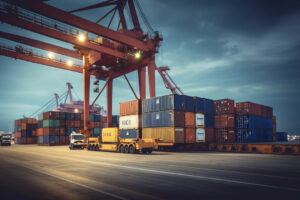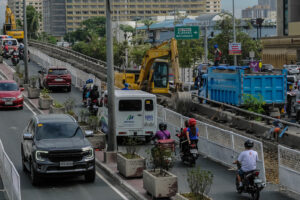
The Art of the Deal: Zero tariff in exchange for US bases
As US President-elect Donald Trump prepares to impose a 20% tariff on imports (and 60% across the board on China), the Philippines should demand zero tariffs in exchange for hosting nine US military bases. This deal would offer the Philippines a minimum economic benefit of $12 billion annually and, even more crucially, jump-start the country’s laggard manufacturing sector and eventually strengthen its economy and defense capabilities. A strong Philippines economy is in the interest of the US.
The art of the deal is asking what the US is willing to pay to keep their bases in the Philippines. For instance, the US and its Japanese and South Korean allies spent $34 billion from 2016-2019 according to official figures. The US has also committed over $175 billion in military and humanitarian aid to Ukraine. These sums illustrate the extent to which the US values its strategic alliances and the lengths to which it is willing to go to support them financially. For all its trouble, the Philippines is getting peanuts. The strategic value of Enhanced Defense Cooperation Agreement (EDCA) for the US is certainly worth far more than the zero tariff the Philippines should demand.
Since the Philippines is stuck with the Mutual Defense Treaty and EDCA, it should leverage them for tangible economic gains, not empty and petty promises. This approach isn’t new: in the 1970s, President Ferdinand Marcos, Sr. negotiated substantial US funding for the Philippines’ national electrification program as compensation for hosting American military installations. With the US now focused on countering China’s influence in the Asia-Pacific region, the Philippines is in a strong position to insist on returns that strengthen its industries — especially since these lag behind ASEAN neighbors.In fact, the Philippines has significant ground to cover compared to its peers. Its electronics exports, for example, reached $39 billion in 2023, while Vietnam’s electronics exports exceeded $100 billion, powered by massive US investments. In automotive parts, the Philippines exported about $1.5 billion, while Thailand exported $14 billion. The textile and apparel sector tell a similar story: Philippine textile exports to the US are around $1 billion, while Vietnam ships over $18 billion. By securing a zero tariff on exports to the US, the Philippines could close these gaps, attract investment, and scale up its production capacities. Combined with recent tax reforms, a tariff-free status would make these industries competitive on a global level.
The sectors positioned to benefit the most from zero-tariff access to the US market begin with electronics and semiconductors, which currently make up more than half of the Philippines’ exports. By securing zero tariff, Philippine electronics manufacturers could see a 25% increase in exports to the US, adding around $9.9 billion annually. This growth would not only drive revenue but also attract new investments in advanced manufacturing and create skilled jobs.
The textile and apparel industry, while smaller than electronics, could also gain considerably. Currently exporting around $1 billion to the US, Philippine textile manufacturers could see a 40% increase in demand with zero tariffs, bringing an additional $400 million. As higher tariffs push US retailers to reconsider suppliers in China and other ASEAN countries, the Philippines could position itself as a cost-effective alternative, generating employment and invigorating the garment sector.
The automotive parts and assembly industry, too, stands to benefit. While still modest, the sector has been expanding and could capture approximately $450 million in new revenue as companies look for alternatives to China and ASEAN neighbors facing tariffs. A zero tariff would position the Philippines as an attractive automotive manufacturing hub in Southeast Asia, creating jobs and expanding the industrial base.
The agriculture and agri-food processing sectors, vital to the Philippine economy, would also gain. The US already imports a range of agricultural products from the Philippines, including tropical fruits, coconut products, and seafood. Zero tariffs would likely increase demand for these exports by 25%, adding around $500 million to the Philippine economy, supporting rural employment, and enhancing food security.
Exports of machinery and equipment, currently valued at $2.5 billion, could see a 25% boost from zero tariffs, yielding an additional $625 million. As global manufacturing supply chains shift, the Philippines could emerge as a competitive producer in this sector, attracting investments, and further integrating into global markets.
The pharmaceuticals and medical devices industry, though still emerging, has the potential for rapid growth. With zero tariffs, Philippine manufacturers could capture a larger share of the US market, generating an estimated $250 million in additional revenue and help bring down exorbitant drug prices in the country. This expansion would support health infrastructure development and create high-skill employment within the country.
As a key ally in Southeast Asia and host of US military facilities, the Philippines deserves tangible economic benefits — not empty, petty, and symbolic promises — in exchange for the access it grants to American forces. A permanent zero-tariff status on Philippine exports to the US is not only justified, it is overdue. This deal would strengthen the Philippines economically, enhance its industries, and better position it as a leading trade partner to the US.
This is a moment for the Philippines to negotiate assertively, securing a deal that truly reflects the value of its alliance with the US. Such an arrangement would not only support the mutual security interests of both countries but would also restart the Philippines manufacturing sector and eventually strengthen its economy. A strong Philippines economy is in the national security interest of the US.
President Trump would understand this deal.
Eduardo Araral, PhD, is an associate professor at the Lee Kuan Yew School of Public Policy, National University of Singapore. This piece is written in his personal capacity.


